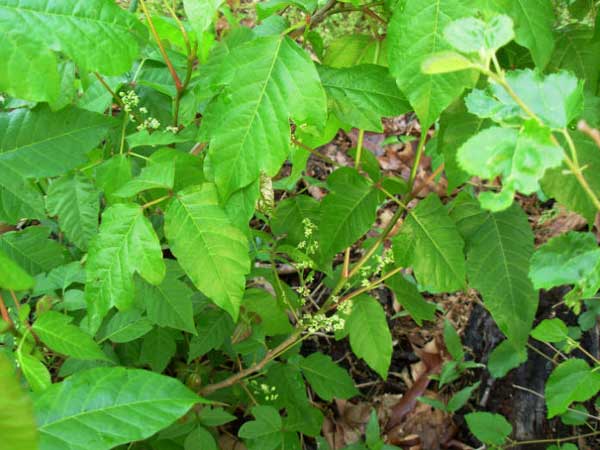What Does Poison Ivy Look Like?

The leaves of poison ivy plants consist of three leaflets, and each leaflet has a pointed tip and can be bright or dull green, according to the National Park Service. The leaflets are usually at least an inch and a half (3 centimeters) long. The edges of the leaflets can vary greatly some are smooth, some have more jagged, tooth-like edges, and some are lobed. The leaflets also vary in their surface some are hairy, some are smooth.
Poison ivy plants produce small clusters of tiny, yellow or green flowers . The flowers are about one-eighth of an inch in diameter and appear between May and July. In the fall, the leaves turn reddish-gold.
The plants grow as shrubs or as vines that can trail over rock or climb up trees and resemble fuzzy ropes. The can be found throughout Canada, the United States, and into Mexico.
An oil called urushiol, which is found in poison ivy, oak, and sumac plants, is an allergen and is what triggers the itchy rash, according to WebMD. The oil is found in the leaves, stems, flowers, berries, and roots of the plants.
The rash appears eight to 48 hours after contact with the oil. It is usually red and looks like lines or streaks on the skin. It can include fluid-filled bumps and raised areas.
The oil can be transferred to skin from other objects such as pet fur or sporting gear, so you don't need to touch the plants directly to experience an outbreak. Unless it's washed off with water or rubbing alcohol, the oil can persist on a surface for years. But urushiol does not cause a rash on everyone who gets it on his or her skin some people do not experience the allergic reaction .
Got a question? Email it to Life's Little Mysteries and we'll try to answer it. Due to the volume of questions, we unfortunately can't reply individually, but we will publish answers to the most intriguing questions, so check back soon.
Sign up for the Live Science daily newsletter now
Get the world’s most fascinating discoveries delivered straight to your inbox.











